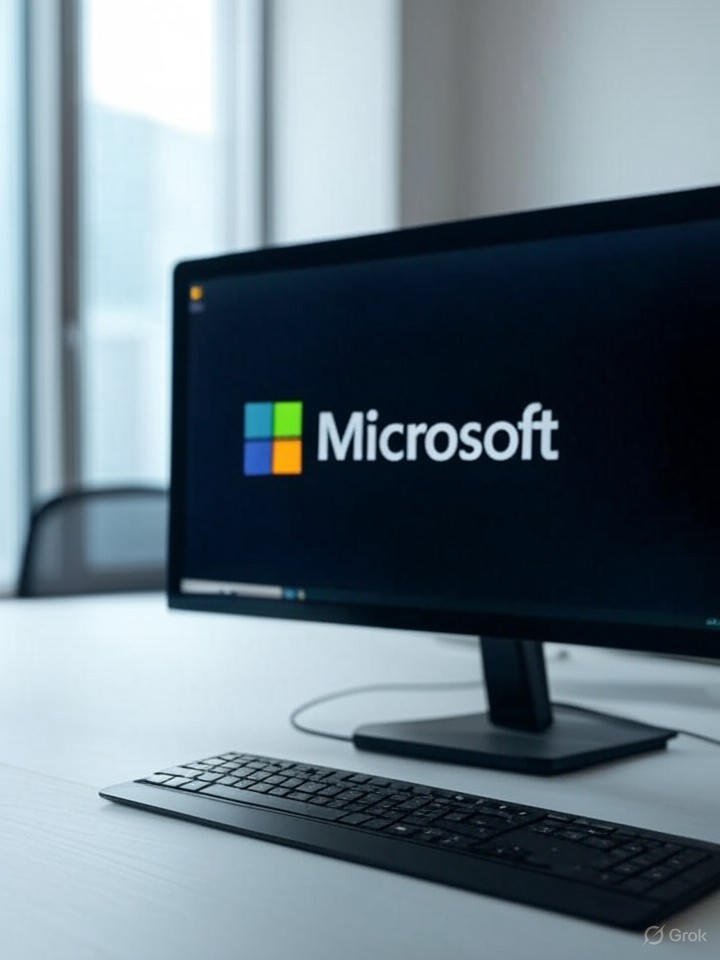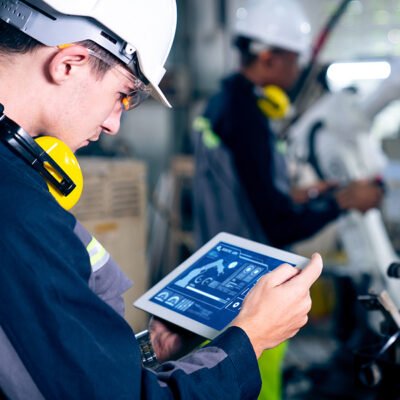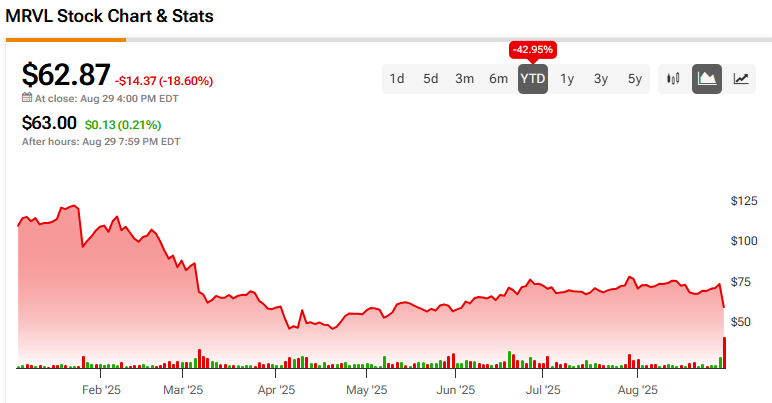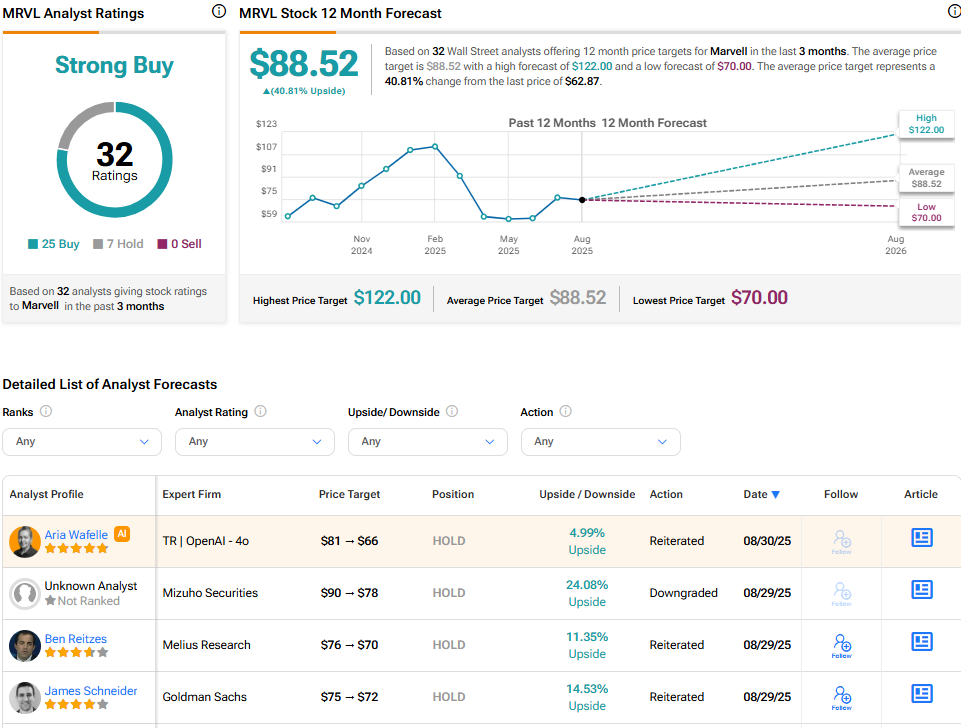Tools & Platforms
This old tech name is now a top AI play, according to analysts

Tools & Platforms
Microsoft Launches In-House AI Models to Reduce OpenAI Dependence

Microsoft’s Strategic Pivot in AI Development
Microsoft Corp. has unveiled its first in-house artificial intelligence models, marking a significant shift in its approach to AI technology. The company announced MAI-Voice-1, a specialized model for speech generation, and a preview version of MAI-1, a foundational model aimed at broader applications. This move comes amid growing tensions in Microsoft’s partnership with OpenAI, where the tech giant has invested billions but now seeks greater independence.
According to details reported in a recent article by Mashable, these models are designed to enhance Microsoft’s Copilot AI assistant, integrating into products like Bing and Windows. The launch raises questions about the future of Microsoft’s collaboration with OpenAI, as the company aims to reduce its reliance on external AI providers.
Implications for the OpenAI Partnership
Industry observers note that Microsoft’s heavy investment in OpenAI, exceeding $10 billion, has fueled much of its AI advancements. However, disputes over intellectual property and revenue sharing have prompted this internal development push. The MAI-1 model, in particular, is being positioned as a direct competitor to OpenAI’s offerings, potentially challenging the startup’s dominance in generative AI.
As highlighted in reports from Reuters, Microsoft began training MAI-1 as early as last year, with parameters estimated at around 500 billion, making it a heavyweight contender against models like GPT-4. This internal effort is led by former executives from AI startup Inflection, bringing expertise to bolster Microsoft’s capabilities.
Technical Innovations and Efficiency Gains
MAI-Voice-1 stands out for its efficiency in generating high-quality audio, trained on a modest 100,000 hours of data compared to competitors’ larger datasets. This approach not only cuts costs but also accelerates deployment, allowing Microsoft to offer faster, more affordable AI features to consumers and businesses.
The preview of MAI-1 focuses on text-based tasks, with plans for multimodal expansions including image and video processing. Insights from Technology Magazine suggest these models could provide advanced problem-solving abilities, integrating seamlessly into Microsoft’s ecosystem and potentially lowering operational expenses.
Market Competition and Future Outlook
This development intensifies competition in the AI sector, pitting Microsoft against not only OpenAI but also Google and Anthropic. By building in-house models, Microsoft aims to control its AI destiny, mitigating risks associated with third-party dependencies. Analysts predict this could lead to more innovative features in Copilot, enhancing user experiences across Microsoft’s software suite.
However, the partnership with OpenAI isn’t dissolving entirely; Microsoft continues to leverage OpenAI’s technology while developing its own. A report in CNBC indicates that internal testing of MAI-1 is already underway, with public previews signaling rapid progress toward widespread adoption.
Broader Industry Ramifications
For industry insiders, this signals a maturation of AI strategies among tech giants, emphasizing self-sufficiency. Microsoft’s move could inspire similar initiatives elsewhere, fostering a more diverse array of AI tools. Yet, challenges remain, including ethical considerations and regulatory scrutiny over AI’s societal impact.
Ultimately, as Microsoft refines these models, the tech world watches closely. The balance between collaboration and competition will define the next phase of AI innovation, with Microsoft’s in-house efforts potentially reshaping market dynamics for years to come.
Tools & Platforms
Point: AI Won’t Take Our Jobs Away

For an alternate viewpoint, see “Counterpoint: Trump’s Extreme Anti-Labor Policies Could Determine the Effect of AI on Workers.”
Read enough headlines about artificial intelligence and you can be excused for thinking that we’re headed for a dystopian future ruled by AI-powered robot overlords. Mass unemployment, including people being forced to train their robot replacements to get that last paycheck, seems to be a common theme in the latest dire forecasts.
Don’t panic. It is helpful to look to history because we’ve gone through these technology-will-destroy-jobs cycles before, and we can see familiar patterns.
Historically, new technologies have transformed the economy in disruptive but positive ways. While some jobs do go away, they tend to be the ones involving manual labor and drudgery. What’s more, new technology creates new opportunities, even whole new industries.
AI is a catch-all term. It generally refers to computer programs like ChatGPT that can seemingly think and create. These programs are complex tools that try to synthesize data from existing sources. AI doesn’t actually think; it imitates what is within its database, with current versions doing it at a higher level than was possible previously. AI can be a valuable tool to automate tedious, repetitive tasks.
Advances have led to fear that AI will do to more intellectual professions what earlier automation did to factory production: eliminate jobs. News outlets will employ AI programs instead of reporters. Films will have AI-generated actors, scripts and so on. Limiting the future use of AI was a significant issue in recent Hollywood strikes by the Writers Guild of America and SAG-AFTRA, the actors’ union.
Manufacturing is a good case study in how new technology transforms work. About 18 million people worked in manufacturing jobs in the United States in January 1980, according to the Labor Department. Since then, factories became heavily automated, and today the number of manufacturing jobs is 12.7 million. Despite this transition, the unemployment rate is 4.2 percent, two full points below the January 1980 rate of 6.5 percent, and the U.S. economy produces more than ever.
Over time, factory workers went from doing things like spray painting assembly line cars to supervising the machines that did the painting, which was safer and more productive; or they found jobs elsewhere that were made possible by automation. Meanwhile, cars became cheaper to buy.
The transition was hard for some people, but we came through it with more jobs overall.
That scenario likely holds for 21st-century AI. A World Economic Forum study found that AI and related technology will create 11 million jobs while displacing 9 million, for a net gain of 2 million. It will also open up new opportunities. Small-business owners who create those awkward homemade ads you see on TV will have new tools to develop fancier, more professional-looking awkward ads.
Another historical point to remember is that new technology rarely lives up to its early hype. AI is in a gold-rush stage, with corporations racing to invest in it based on extravagant promises about AI’s potential capabilities. New waves of technology often come with promises that they will be able to perform miracles, promises that should be viewed skeptically.
In the aughts, for example, we were told that embryonic stem cells would soon allow paraplegics to walk again. Some touted 3-D printing as readily giving everyone the replicator technology from “Star Trek,” rather than more Minecraft fridge ornaments. And so on.
Even transformative technology, like the internet, changes things in unexpected ways. Remember when the internet was supposed to make it easier to preserve and access reliable information, rather than drowning us in a sea of trivial and often unreliable data?
Since AI can only imitate rather than think, companies that rely exclusively on it instead of actual human minds do so at their own peril. The derisive term “slop” has already come to be associated with AI-generated art thanks to its habit of getting details like human anatomy wildly wrong. AI writing programs have also shown the curious habit of “hallucinating” research that does not exist. The FDA, for example, used an AI program to speed up drug approvals, but it sometimes relied on studies that didn’t exist. This failure forced the FDA to assign more staffers to vet the AI-produced studies and weed out the ones based on false data.
Yes, AI technology will continue to improve, but the sci-fi future of thinking machines is still a long way off. Until then, AI is just another tool, and tools will always need human minds and hands to operate them.
Tools & Platforms
Marvell Technology Stock Plunges 18.6% as Weak Outlook Overshadows AI Gains

Marvell Technology (MRVL) shares crashed 18.60% on Friday after the company issued a weaker-than-expected forecast for the third quarter. The sharp decline came despite second-quarter results showing strong growth in revenue, steady profits, and earnings in line with expectations. However, investors focused on the outlook rather than the recent gains, which led to a selloff in the stock.
Elevate Your Investing Strategy:
- Take advantage of TipRanks Premium at 50% off! Unlock powerful investing tools, advanced data, and expert analyst insights to help you invest with confidence.
On Thursday evening, Marvell Technology reported adjusted earnings of $0.67 per share, matching The Street’s estimates. Revenue reached $2.006 billion, slightly below the $2.01 billion consensus. Even with this small gap, total revenue rose 58% from the same quarter last year. The company’s data center unit led the surge, with sales up 69% to $1.49 billion, and it now accounts for nearly three-quarters of Marvell Technology’s overall business.
Weak Forecast Weighs on Analysts’ View
However, the company’s guidance for the third quarter shifted the market’s focus. Marvell Technology projected revenue of $2.06 billion, give or take 5%. That figure came in below the Street’s $2.11 billion target. Executives said data center sales will stay flat in the coming quarter before improving toward year’s end. In the meantime, analysts noted that investors have grown used to upbeat reports from companies tied to artificial intelligence, so the lower outlook stood out.
During the earnings call, Chief Executive Matt Murphy said demand for custom silicon and electro-optics products remains strong, with more than 50 new AI design projects underway. Yet he acknowledged that timing around new deployments will affect near-term results.
After the release, several banks adjusted their stance. Bank of America’s five-star analyst Vivek Arya cut his rating on Marvell Technology to Neutral from Buy and reduced its price target to $78 from $90. UBS’s top analyst Quinn Bolton reduced his target to $80 from $85, retaining a Buy rating. Morgan Stanley five-star analyst Joseph Moore also dropped his target to $76 from $80 and a Hold position. Many of these cuts reflected caution around the pace of major cloud projects, including Microsoft’s (MSFT) Maia accelerator and Amazon’s (AMZN) next-generation chips.
Stock Levels and Market View
Marvell Technology shares have now fallen more than 40% in 2025 and trade about 50% below their January high of $126.06. Despite the weak forecast, the company posted $461.6 million in operating cash flow and kept gross margins at 59.4%. Investors will look to the fourth quarter and beyond for signs that key AI partnerships with Amazon and Microsoft can deliver stronger growth.
Is Marvell Stock a Buy?
Despite the stock’s crash on Friday, Marvell Technology continues to boast a Strong Buy consensus among analysts. The average MRVL stock price target stands at $88.52, implying a 40.81% upside from the current price.

-
Tools & Platforms3 weeks ago
Building Trust in Military AI Starts with Opening the Black Box – War on the Rocks
-

 Ethics & Policy1 month ago
Ethics & Policy1 month agoSDAIA Supports Saudi Arabia’s Leadership in Shaping Global AI Ethics, Policy, and Research – وكالة الأنباء السعودية
-

 Business2 days ago
Business2 days agoThe Guardian view on Trump and the Fed: independence is no substitute for accountability | Editorial
-

 Events & Conferences3 months ago
Events & Conferences3 months agoJourney to 1000 models: Scaling Instagram’s recommendation system
-

 Jobs & Careers2 months ago
Jobs & Careers2 months agoMumbai-based Perplexity Alternative Has 60k+ Users Without Funding
-

 Funding & Business2 months ago
Funding & Business2 months agoKayak and Expedia race to build AI travel agents that turn social posts into itineraries
-

 Education2 months ago
Education2 months agoVEX Robotics launches AI-powered classroom robotics system
-

 Podcasts & Talks2 months ago
Podcasts & Talks2 months agoHappy 4th of July! 🎆 Made with Veo 3 in Gemini
-

 Podcasts & Talks2 months ago
Podcasts & Talks2 months agoOpenAI 🤝 @teamganassi
-

 Mergers & Acquisitions2 months ago
Mergers & Acquisitions2 months agoDonald Trump suggests US government review subsidies to Elon Musk’s companies





















